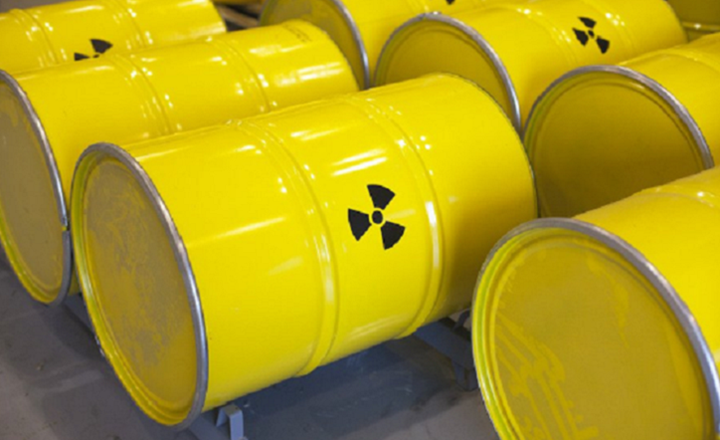For the past few years, uranium production has been rising steadily. Although the production in 2016 had slow down considerably, production still increased a total of 1,500 tons.
Before deciding which companies would be good to invest in uranium, let’s take a look at the 2016’s top countries in uranium production to gain a better understanding of which foreign market would be best for uranium investment.
Kazakhstan
With 7 large uranium mines based in Kazakhstan, it is no surprise that this country is first when it comes to the global uranium production. At 24,575 tons, Kazakhstan accounted for 39% of the world’s production of uranium. When mining for uranium, most mines in Kazakhstan uses a mining process called in-situ leaching, or solution mining.
With 745,300 tons of known recoverable uranium resources, Kazakhstan is not a country you should skip when you want to invest in uranium.
Canada
Contributing 22% of the world’s total uranium production, Canada produced 14,039 tons of uranium in 2016. If you are looking to invest in uranium in Canada, look to buy stocks from Cameco, a major mining company that holds majority ownership over the world’s two largest uranium mines (both located in Canada): McArthur River and Cigar Lake.
Besides uranium investment, Canada is a great place to invest in other natural resources like nickel and copper.
Australia
Increasing its production from 5,672 tons in 2015 to 6,315 tons in 2016, Australia has produced 10% of the world’s total uranium supply. It also holds the world’s biggest known recoverable uranium resources, making it full of potential for uranium investment. However, many mining companies are now in limbo as the government had recently announced that no new uranium projects will be approved.
This is a good example of why those in uranium investment should keep up with the uranium news today, so there is less risk to your money.
Niger
Despite falling from 4,057 tons in 2015 to 3,477 tons in 2016 in uranium production, Niger still accounted for 7.5% of the world’s uranium production. One of the two mines in operation in Niger is one of the world’s largest open-pit mines, SOMAIR.
It should be noted that both mines in Niger are owned by Areva, a Canadian mining company. Thus, if you want to invest in the production of SOMAIR as a uranium investment, you should look to buying stocks from Areva.
Namibia
After falling in production from 2012 onwards, Namibia’s uranium production finally rose from 2,993 tons in 2015 to 3,315 tons in 2016.
If you wish to invest in Namibia’s Mines, make sure to research its production management of the mines, as there are two uranium mines in Namibia that are capable of producing about 10% of the world’s uranium output. One of the two mines is Langer Heinrich, which is owned by Paladin Energy, an Australian-based mining production company. The other mine, Rossing mine, is owned mostly by Rio Tinto.
A Namibia based mining company, Swakop Uranium, is expected to increase its production at Husab mine in 2017. They are reaching for a goal of 5,500 tons of uranium per year. Namibia investors who wish to invest in uranium should keep a look out for Swakop.
Russia
In 2016, Russia’s uranium production came to 3,004 tons, a slight drop from the 3,055 tons in 2015. Despite the drop, however, Russia shows some promise when it comes to uranium production; thus potential in uranium investment.
Recently, Russia has set federal funds aside to increase its production of uranium in order to meet the country’s energy needs. ARMZ Uranium Holding, a subsidiary company to Rosatom — a Russian based nuclear energy company — owns the Priargunsky underground mine in Russia. ARMZ is also working on developing the Vershinnoye deposit in Southern Siberia through subsidiary company JSC Khiagda. If you choose to invest in uranium in Russia, take these companies into consideration.
Uzbekistan
A slight increase from 2015’s 2,385 tons of uranium, Uzbekistan produced around 2,404 tons in 2016. Although it is low on the list of top uranium productions, the country is looking to increase production rates with partnerships with Japan and China.
Uranium investing in Uzbekistan has a lot of potential; in April 2015, Navoi Mining Metallurgy Combinat (NMMC), a company that handles all of Uzbekistan’s uranium mining activities, announced that the country’s government has approved plans modernize its production facilities by 2019. Investing in uranium in Uzbekistan could very well pay off in the long run. As well, the country has two research reactors: one has been decommissioned but the other is set to restart in July 2017.
China
Producing 1,616 tons of uranium, China’s production in 2016 has remained the same as last year’s. If you are looking for a steady uranium investment, China would be a good bet; their production level had been 1,500 tons from 2012 to 2014, rising a bit in 2015.
In the long term, China is also looking to up their production. The country’s only domestic uranium producer, China General Nuclear Power, have been trying to broaden its nuclear fuel supply deals with Kazakhstan as well as other uranium producers overseas. Ultimately, China hopes to produce one-third of its uranium supply domestically, acquire one-third through ownership of foreign mines and trade deals, and to purchase the rest on the open market.
United States
In 2016, United States’ uranium went down 131 tons: from 2015’s 1,256 tons to 1,125 tons in 2016. Uranium production in the U.S. is largely done at the White Mesa mine in Utah. The mine is a combination of four or five underground mines, with several in situ leach operations.
Ukraine
Although heavily dependent on nuclear power, Ukraine’s uranium production has dropped from 1,200 tons in 2015 to 1,005 tons in 2016. The 15 reactors located in the country only meet around half of the country’s requirement; thus Ukraine’s uranium supply comes mainly from Russia.
In 2016, Ukraine’s minister for coal and energy struck a deal with Russia’s Kazatomprom for a joint venture in uranium production and recovery.
Featured Image: Twitter










